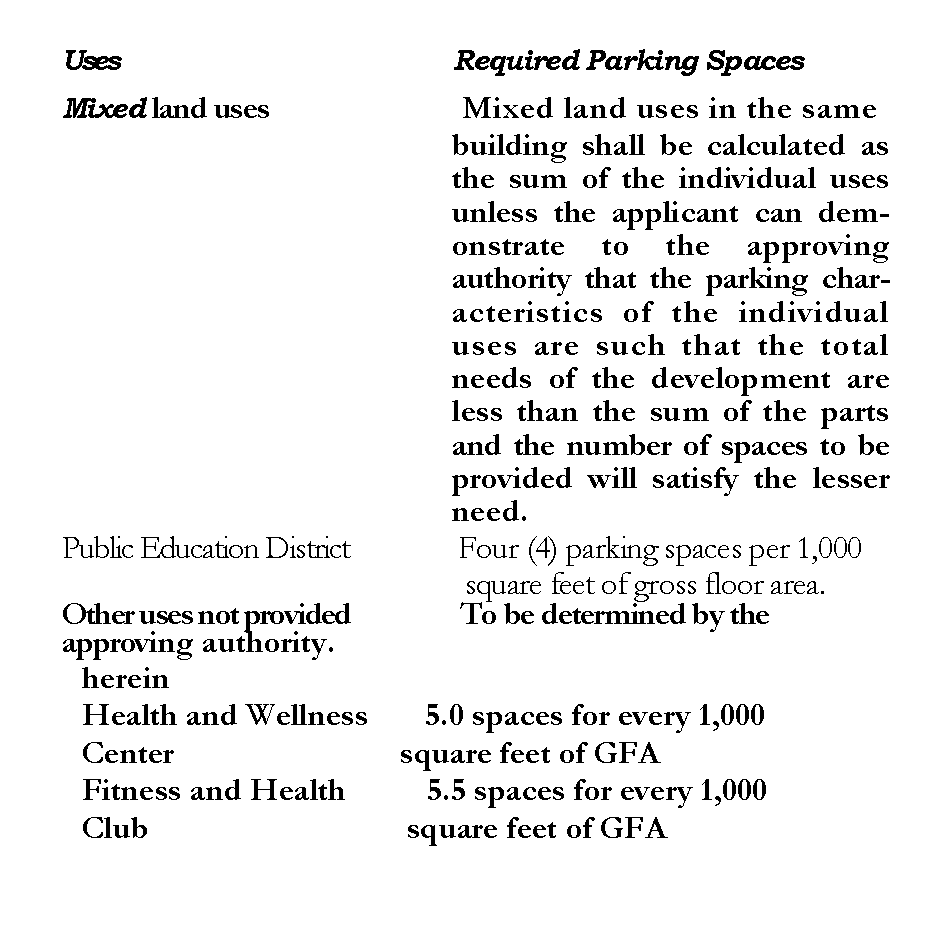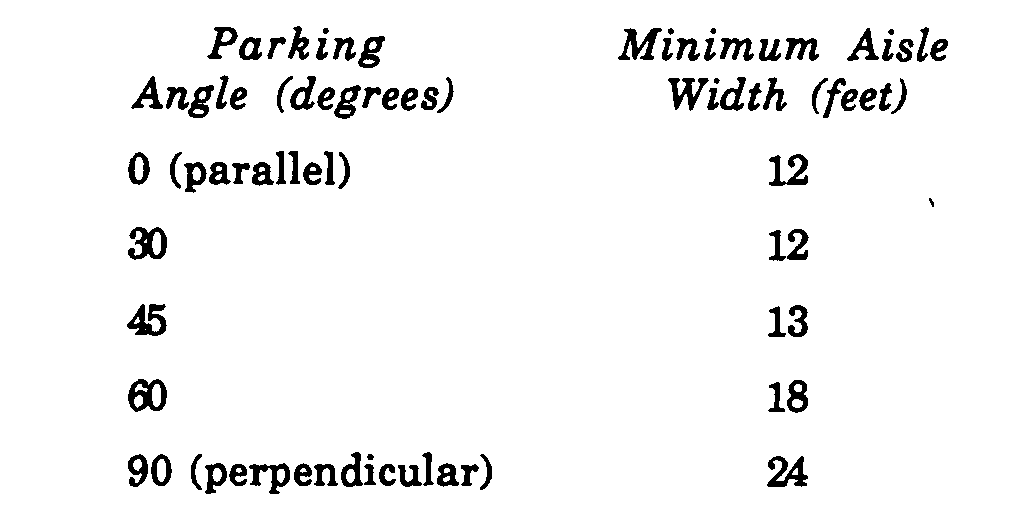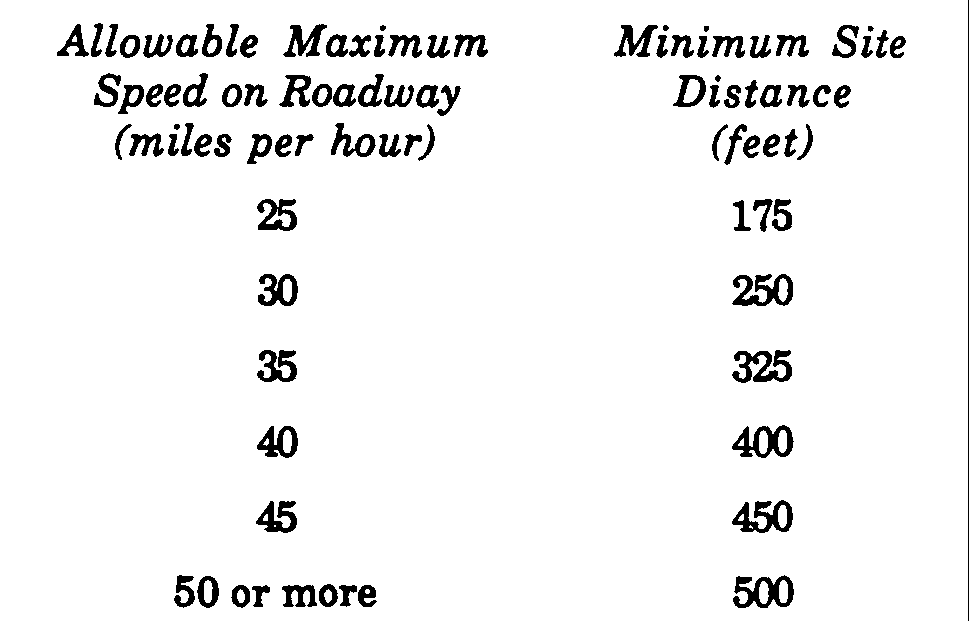
**Webmasters Note: The previous chart has been amended as per Ordinance No. 1653.�
b. Location of Parking Spaces.�
1. The approving authority shall approve the location of all proposed parking spaces on the site and shall take into consideration the size and topography of the site, visibility from the site to the adjoining street as well as within the parking area, conditions of safety relating to the movement of people and vehicles and the elimination of nuisance factors, including glare, noise, dust and other similar considerations.�
2. Subject to other conditions as specified herein, off-street parking shall not be located in a required front yard, except that where the required front yard exceeds thirty (30') feet parking shall be permitted in an area located thirty (30') feet or more from the street right-of-way line. No off-street parking area shall be located closer than eight (8') feet to a side or rear lot line. These conditions shall apply to all surface and above grade parking facilities.�
3. All parking facilities shall not be located closer than thirty (30') feet to any two (2) intersecting streets or within the sight triangle of any driveway.�
c. Parking Area Design Standards.�
1. Aisle Widths. Provisions shall be made for safe and adequate circulation of pedestrians and vehicles within and adjoining the subject property. The width of all aisles providing direct access to individual parking stalls shall be in accordance with the standards established in Table 2. Only one-way traffic shall be permitted in aisles of less than twenty-four (24') feet.�

2. Size of Parking Stalls. Parking stalls for churches, community buildings and social halls, hospitals and nursing homes, manufacturing and industrial uses, business and professional offices and wholesale and warehouse establishments shall have a minimum area of one hundred eighty (180) square feet of space, exclusive of aisles, and shall measure nine (9') feet in width and twenty (20') feet in length. For all other uses there shall be a minimum area of two hundred (200) square feet of space, exclusive of aisles, which shall measure ten (10') feet in width and twenty (20') feet in length.�
3. Circulation within Parking Area.�
Except for attendant parking, all parking spaces shall be designed free and clear of any obstruction to individual parking stalls. Such parking spaces shall be located in such a fashion as to permit all vehicles to exit same in a safe and orderly manner. Under no condition shall vehicles be permitted to back out of a parking lot driveway or otherwise block the free movement of traffic within the parking area or specific points of safety control, such as fire hydrants, doorways elevators or other similar locations.�
Aisle widths and circulation patterns shall be designed to permit emergency and service vehicles, such as delivery trucks, solid waste collection vehicles and the like, to have reasonable access to and space for their intended functions.�
Pedestrian circulation within a parking area shall be, to as great an extent possible, separated from vehicular traffic. Safety zones, crossing points and sidewalk areas, where warranted, shall be provided.�
The use of pedestrian carts or other similar accessory vehicles shall not be permitted to be retained within the driving area of the parking facility.�
d. Driveway Design Criteria.�
1. Location of Driveways. All entrances and exit driveways to a public or private street shall be so located to afford maximum safety to said roadway and to provide for safe and convenient ingress and egress and to minimize conflict with the flow of traffic.�
2. Site Distances.�
(a) The minimum site distances established in Table 3 shall be adhered to between a driveway and the adjoining street in accordance with the definition of a sight triangle. Driveway shall be designed in profile and grading, which shall be reviewed by the approving authority engineer.�

(b) For the purpose of this Chapter, site distance measurement shall be measured from the driver's seat of a standing vehicle located on that portion of the exit driveway that is immediately contiguous to the traveled way, with the front of the vehicle ten (10') feet behind the right-of-way line of the road and with the height of the eye three and seventy-five hundredths (3.75') feet to the top of the object four and five-tenths (4.5') feet above the pavement.�